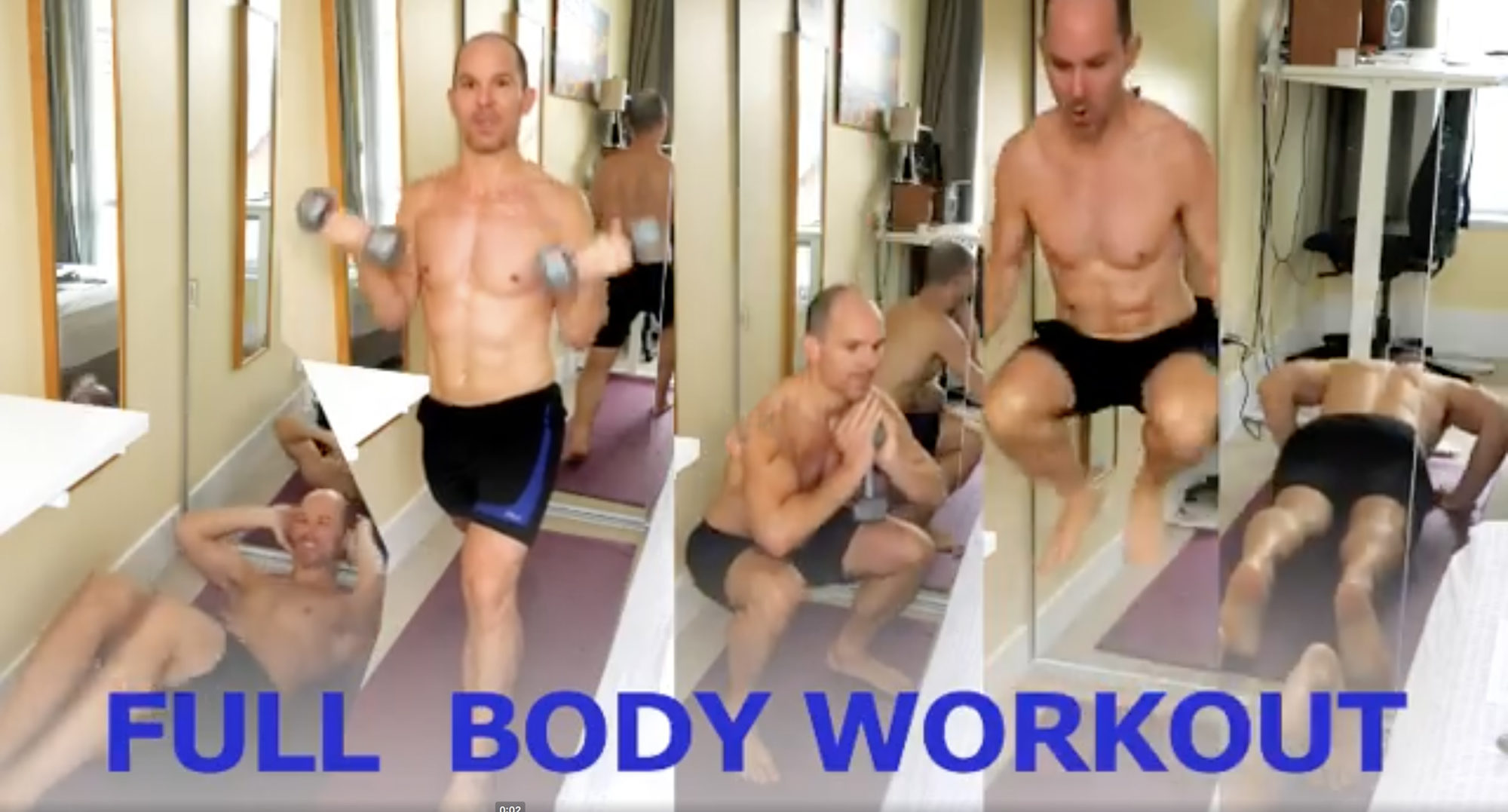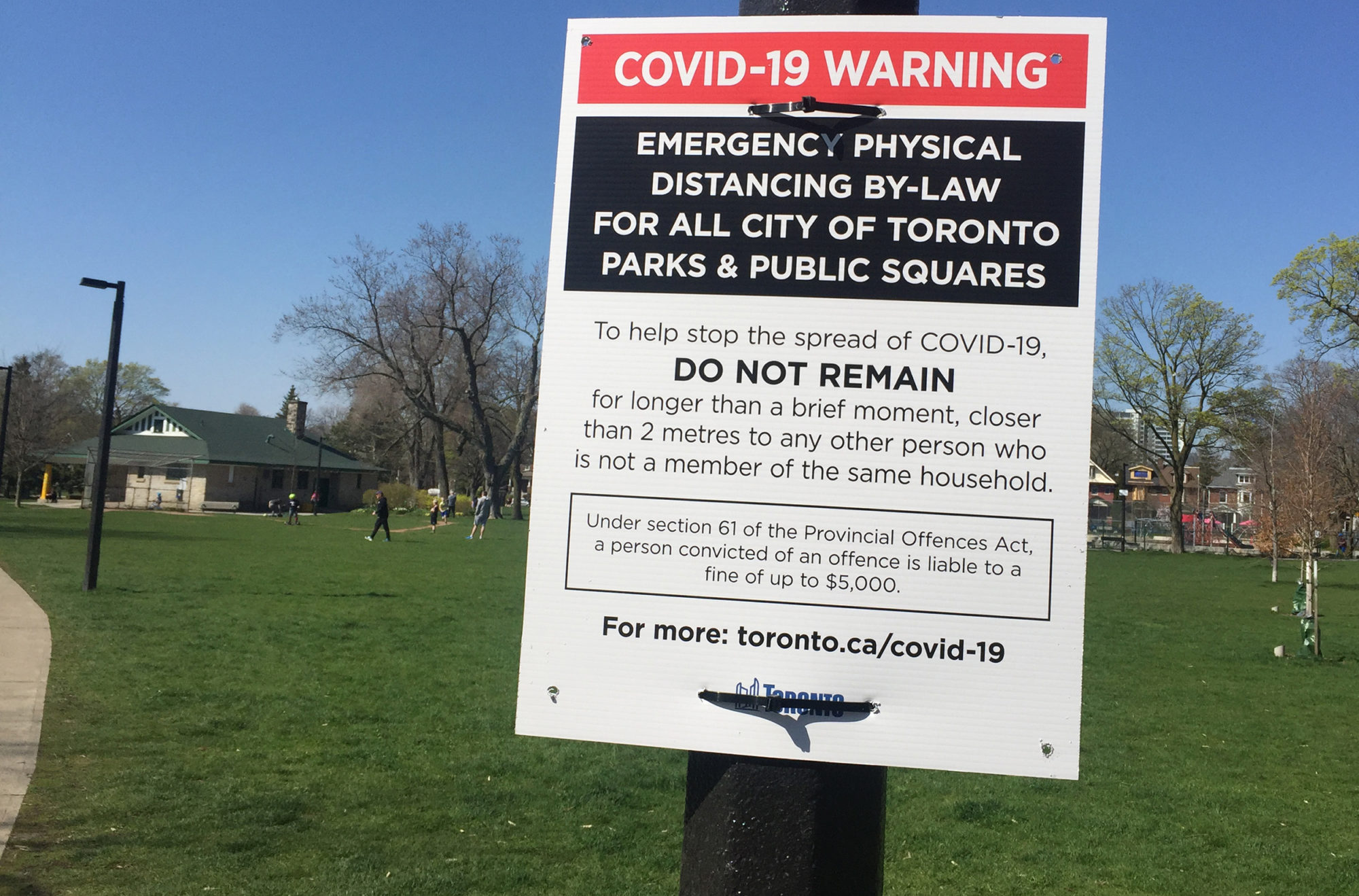
Julian Liurette starts his day off with a workout. He laces up his sneakers, does a few stretches and makes sure to get his blood pumping with some warmup exercises to begin. It’s a beautiful and sunny April day, perfect for a run.
Except today is anything but a normal day. Instead of hitting the trails with his running group, he will need to confine his workout to the walls of his home.
This is the new normal for Liurette, who lives in Toronto, Canada. Like people all over the world, he has had to alter his routine as COVID-19 spreads across the country, while the federal and provincial governments are attempting to contain the spread.
Shuttered businesses, closed schools and lines out the doors of grocery stores are just some of the many effects of coronavirus that Canadians are seeing. For Liurette, a filmmaker with a lifelong passion for fitness and health, his incredibly active lifestyle has taken a hit as well.
“I used to swim or run three to four times a week for an hour and a half. Now I run once or twice a week on my own for just 30 to 45 minutes and try to cycle to the supermarket every once in a while,” Liurette said.
Liurette has suffered from a form of arthritis called Ankylosing Spondylitis for the past 20 years, and getting his body moving, in addition to taking his medicine, is crucial to managing the disease. With no access to gyms or swimming, and with his running group temporarily disbanded, staying active has become a challenge. He has had to drastically change his workout regime to adapt to the new norm of staying home.

But that is not the only change he has been forced to endure with the onset of novel coronavirus. As a filmmaker and the creative director of Heliopolis Productions, a video production company, most of his shoots have been cancelled and filming has halted, leaving him without work for the time being.
“I feel very lucky because, fortunately, I have savings and my partner is still working, so things are going well for me now,” Liurette said. “I’m not too worried at this point, but I know that people who have lower incomes or live day-to-day must be really stressed about just being able to pay for rent and food.”
For workers and small businesses who are struggling during this time, the government has committed $107 billion to support the COVID-19 Economic Response Plan. Under this plan, workers who have lost their income due to COVID-19 can file for the Canada Emergency Response Benefit (CERB), a taxable benefit of $2,000 every four weeks for up to four months.
While Liurette says he will not need to claim the CERB as of now, making videos is more than just his career, it is his passion too. To combine both of his passions— making videos and fitness— and to provide some motivation for others during this time, he has been filming his at-home workouts and posting them on Instagram every day.
“I think it’s great for not only our bodies but for our minds as well,” Liurette said. “For that brief period of time, we focus on something else rather than the news and all the problems we might be facing. We come out feeling better and refreshed when we make the effort to do a short home workout every day.”

Liurette has only a few hundred followers but said that some of them have messaged him expressing gratitude for his videos. He explained that he is happy to help even just a few people in this small way and to do his part in flattening the curve by staying home.
The Global News reports that Canada has had some success in flattening the curve thanks to their response being largely coordinated and relatively quick. As of April 30, the country had 52,069 confirmed cases of COVID-19 and had seen 3,602 deaths.
Pauline Holdsworth, a radio producer for CBC Radio-Canada, said that while it may be too early to completely tell, the curve seems to be flattening in some areas. She said there is still a concern about putting widespread testing into place, similar to what other countries are experiencing. But the government’s quick response and messaging, she said, along with the country’s overall attitude, has helped to keep their cases low.
In particular, the Canadian government has been closely watching what the virus has done to the United States, basing its response off what the U.S has done — or failed to do— in order to prevent getting hit as hard.
Stéphanie Fillion, writing in Foreign Policy, reports that Canada’s cases per capita, so far, are about one-third that of the United States.
“I think that the attitude of the federal government has been different than the United States,” Holdsworth said. “I think there was concern expressed earlier. I know that in the United States, at least early on, President Trump was still expressing some skepticism about whether this was going to be a big concern there.”

From early on, Canadian leaders at multiple levels unanimously called on citizens to practice social distancing, with the messages from both the provincial and federal government mirroring each other.
“We have seen really big changes in our society and our country in just a month,” Holdsworth said. “People have really altered the rhythms of their daily lives. I hope that we can sustain that and that the government is able to find a way to keep these measures in place for as long as we need to in order to avoid a surge that is going to overwhelm the healthcare facilities.”
Canadian officials and politicians have been in no rush to reopen economies and lift restrictions. Prime Minister Justin Trudeau urged Canadians to be patient and warned that reopening the economies too soon could create another peak in cases.
“I think we are waiting to see what the future holds,” Holdsworth said, “We are really hoping that these measures we are putting in place are going to be enough to avert the situation we are seeing in the U.S and other places.”
Canada has also been able to put aside partisan and regional differences to present a more united front against the virus, something the U.S has been struggling with, Holdsworth said.
Julie Nolin, a professor at the British Columbia Institute of Technology and a journalist at CTV News, said Canada’s political roots in socialism may explain why the public has pulled together well during this crisis.
“In the U.S, there is so much politicizing of what is going on, and we don’t do that here,” Nolin said. “It doesn’t matter who is in what party, it’s not important. It’s just, “Let’s get to work and help each other.””
Nolin also said that Canada’s affordable health care system is something that gives the country an advantage in fighting this virus.
“I think what helps us out tremendously is that we have universal healthcare,” Nolin said. “I’ve read stories about people who have been reluctant to go get tested down in the states or seek out treatment because they are thinking about how they are going to afford it.”
Nolin said Canada’s focus has been mainly on public health and that she is glad this is the number one priority. However, she says there are also worries about the economic and mental health consequences of the pandemic, as well as questions about what the new normal in Canada will look like.
Nolin wrote her thesis on the 2008 recession and said that from a scholarly perspective, she predicts it will take years for both Canada and the U.S to get over the difficulties of the pandemic.
Setting aside the two countries’ differences, Canada and the U.S are extremely interconnected, Nolin said. What happens in the U.S will inevitably affect Canada from an economic standpoint.
“We are so intertwined and so affected by what the U.S does that we are going to be impacted,” Nolin said. “Either by the U.S economy not doing well or our economy not doing well, there will be huge ramifications of this economically.”
Holdsworth fears how Canada’s communities are going to be impacted and said she worries that they will be forever changed when small businesses are not able to bounce back after being closed for so long.
“It’s surreal now to remember taking the crowded subway to work or sitting in restaurants— all of these things that were facts of our daily life.” Holdsworth said. “I wonder if those restaurants and cafes, which are all a big part of making my city such an interesting, vibrant place to live, are still going to be here when we emerge from this.”
Canadians are also worried about a second wave health epidemic occurring— a mental health epidemic from the added stress and the isolation people are experiencing, Holdsworth said.
“It’s a time of such stress and anxiety with people worrying about their futures, their jobs, and paying rent,” Holdsworth said. “So, I think that that is going to be a long-term issue here and all around the world.”
Holdsworth said she also hopes some positives can come out of this and that should something like this occur again, she’d like to see the world learn from this experience, so it is able to better prepare itself.
“I wonder if we are going to fundamentally change our society as a result of this and if we will put measures in place to mitigate the next time that this happens,” Holdsworth said.
